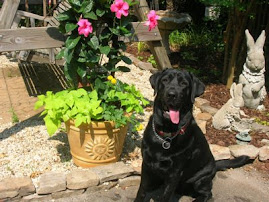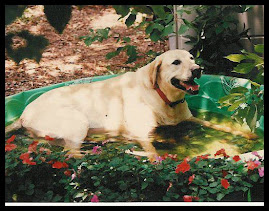Thanks to MaxMom, we have Soccer World Cup fever.
I have agreed to highlight the SWC team from Japan to help celebrate Unity in Diversity.
I know very little about soccer and even less about the Japanese team, but I have traveled to Japan so I consider myself somewhat of an expert, chuckle!
Do you enjoy cheering for the underdogs?
I have agreed to highlight the SWC team from Japan to help celebrate Unity in Diversity.
I know very little about soccer and even less about the Japanese team, but I have traveled to Japan so I consider myself somewhat of an expert, chuckle!
Do you enjoy cheering for the underdogs?
If so, The Sumarai Blue, as affectionately called in Japan, is definitely the team for you! Japan is the lowest ranked team in their group.
Former team captain, Hidetoshi Nakata said, "The team has not had the best of years but it can only go up.”
Midfielder, Keisuke Honda said that persistent criticism from the national press has convinced the defiant Japanese squad they have "nothing to lose at the World Cup finals."
I have to admit, I lost interest quickly, but thank goodness, MaxMom said our post doesn't have to be solely about the team.
Soooo, guess what I'm going to discuss?
You betcha',
dogs in Japan.
But not just any dog. I want to share the story of a very special dog named Hachiko.
Perhaps the most well known animal in Japan is Hachiko, an Akita that died in 1935 and is now stuffed and displayed at Japan's National Science Museum. "Chu-ken Hachinko, or "faithful dog Hachiko,"was the pet of a Tokyo University professor, Hidesaburo Ueno. Every morning the professor and Hachinko would walk together to the Shibuya station, where the professor would take the train to work and each afternoon at 3:00pm when the professor came home his dog was waiting at the platform to meet him.
Then one day in 1925 the professor suddenly died from a stroke at work. Hachinko waited at the station that afternoon but her master didn't return. She waited again the next afternoon. And the next and the next and kept coming back to the station, every afternoon for the next 10 years.
Efforts to give Hachiko to adopted owners failed. He continued to go to the station and spend his nights sleeping on the steps of the late professor’s house. Even when he was old and lame he continued to show up at 3:00pm at the station. He was cared for by the professor’s gardener and a stationmaster at the station, often begging for food from the numerous street vendors in the area.
Hachiko's devotion caught the imagination of the world. Articles were written about him inside and outside Japan. The Los Angeles Friends of Animals was so moved it raised money for a statue of the faithful dog that was erected in Shibuya Station in 1934, a year before Hachiko died. Replicas of the statue were given to schools all over Japan. Though his body was put on display at the National Science Museum near Ueno Station in Tokyo his bones were interred with those if hit master in Aoyama cemetery.
Hachiko Legacy
Everyone in Japan knows Hachiko. Children are read bedtime stories about the faithful dog and teenagers in Tokyo often say "Hachiko mae de!" ("Let's meet at Hachiko"), a reference to the teenage hangout and entertainment district of Shibuya, where the dog used to meet his master.
In 1936 the Hachiko story was included in the moral education textbooks for primary school as an illustration of loyalty and fealty to a master, encouraging loyalty to Emperor Hirohito. During World War II, Japan's military dictators made Hachiko's story mandatory reading in school even though they ordered her statues melted down so the metal could be used in shipbuilding.
Jesse Glass, a professor at Meikai University in Chiba, told the Daily Yomiuri: “The story of Hachiko is particularly appealing to the Japanese because the high value that Japanese culture traditionally places on fealty to the group, boss or master—eve if the mast master is absent in death.” Cynics speculate that maybe it was handouts from yakitori vendors not loyalty to his master that may have kept of Hachiko coming back—a number of wooden skewers were found in his stomach after he died.
Today Japanese can choose from hundreds of books, movies, compact discs, statues and plaques honoring Hachiko. He has been commemorated on a postage stamp. Department stores sell a $50 Hachiko necktie with "Wan Wan" printed on it and a $58 wristwatch with the English message on the dial: "The most heartful and Japanese, a dog. He goes to station to meet” In 1994, the Year of the Dog on the Chinese lunar calendar, the Culture Broadcasting Network broadcast a newly discovered recording of Hachinko's bark. (Source: Factsanddetails.com)
But not just any dog. I want to share the story of a very special dog named Hachiko.
Perhaps the most well known animal in Japan is Hachiko, an Akita that died in 1935 and is now stuffed and displayed at Japan's National Science Museum. "Chu-ken Hachinko, or "faithful dog Hachiko,"was the pet of a Tokyo University professor, Hidesaburo Ueno. Every morning the professor and Hachinko would walk together to the Shibuya station, where the professor would take the train to work and each afternoon at 3:00pm when the professor came home his dog was waiting at the platform to meet him.
Then one day in 1925 the professor suddenly died from a stroke at work. Hachinko waited at the station that afternoon but her master didn't return. She waited again the next afternoon. And the next and the next and kept coming back to the station, every afternoon for the next 10 years.
Efforts to give Hachiko to adopted owners failed. He continued to go to the station and spend his nights sleeping on the steps of the late professor’s house. Even when he was old and lame he continued to show up at 3:00pm at the station. He was cared for by the professor’s gardener and a stationmaster at the station, often begging for food from the numerous street vendors in the area.
Hachiko's devotion caught the imagination of the world. Articles were written about him inside and outside Japan. The Los Angeles Friends of Animals was so moved it raised money for a statue of the faithful dog that was erected in Shibuya Station in 1934, a year before Hachiko died. Replicas of the statue were given to schools all over Japan. Though his body was put on display at the National Science Museum near Ueno Station in Tokyo his bones were interred with those if hit master in Aoyama cemetery.
Hachiko Legacy
Everyone in Japan knows Hachiko. Children are read bedtime stories about the faithful dog and teenagers in Tokyo often say "Hachiko mae de!" ("Let's meet at Hachiko"), a reference to the teenage hangout and entertainment district of Shibuya, where the dog used to meet his master.
In 1936 the Hachiko story was included in the moral education textbooks for primary school as an illustration of loyalty and fealty to a master, encouraging loyalty to Emperor Hirohito. During World War II, Japan's military dictators made Hachiko's story mandatory reading in school even though they ordered her statues melted down so the metal could be used in shipbuilding.
Jesse Glass, a professor at Meikai University in Chiba, told the Daily Yomiuri: “The story of Hachiko is particularly appealing to the Japanese because the high value that Japanese culture traditionally places on fealty to the group, boss or master—eve if the mast master is absent in death.” Cynics speculate that maybe it was handouts from yakitori vendors not loyalty to his master that may have kept of Hachiko coming back—a number of wooden skewers were found in his stomach after he died.
Today Japanese can choose from hundreds of books, movies, compact discs, statues and plaques honoring Hachiko. He has been commemorated on a postage stamp. Department stores sell a $50 Hachiko necktie with "Wan Wan" printed on it and a $58 wristwatch with the English message on the dial: "The most heartful and Japanese, a dog. He goes to station to meet” In 1994, the Year of the Dog on the Chinese lunar calendar, the Culture Broadcasting Network broadcast a newly discovered recording of Hachinko's bark. (Source: Factsanddetails.com)
~~~~~~~~~~~~

Updated 2:53 EST:
Japan won the game with a score of 1:0!
Congrats, Sumarai Blue!














.jpg)

.jpg)































19 comments:
Great post!
Thanks fur sharing it with us!
We aren't sure we khould evFUR watch that movie - the trailer makes Mom khry -
I mean, she khan't even watch our khopy of Eight Below!
Hugz&Khysses,
Khyra
I saw that movie with Richard Gere and cried - sobbed at the beauty of the story. Even though they set the story in the USA it was the same heartwrenching end....
PS Yes those 2 moose were standing between my driveway and Joan's. They are adorable!
Hey there Kit!
What a wonderful post! I loved hearing the story about Hachiko! You really have done an amazing job in honouring Japan today! It is always difficult when it's not your own country, so CONGRATULATIONS on contributing to unifying our diverse planet!
Sending lotsaluv to you and your special doggies.
MAXMOM IN SOUTH AFRICA
We love the Hachiko story. My Momma and Pops watched a movie based on Hachiko before (a Japanese one, not the Richard Gere remake) and Momma and her friends sobbed their eyes out!
Sonic
What a cool story! Its a good day to learn something new! Especially about dogs and someplace I've never been!
I thought you might be for the underdogs! Interesting or not! I had heard the story of the dog waiting for his master, but didn't realize it originated in Japan! Your blog is always educational! Good work! SH
a movie was made about this incredible dog...have not seen it, but know the story well...amazing isn't it!!
thank your hubby for the nice comment...:) and keep working it girl! exercise can be fun!? :)
have a great week!
xoxo
Intereting
I don't know much about Japan but I've been to Tokyo and am impressed by the politeness of their people, clean streets and their shrines.
I watched the movie of Hachiko. It's really touching. A very sweet story!
Great post! Mom and me LUVS to root for the under dogs!
Woofs and Licks,
Maggie Mae
Great dog story, even though it saddens me.
What a wonderful story. I have never heard that before. Thank you so much for such a heartwarming Monday morning story.
Madi and Mom
Even way up here in Maine there is World Cup fever everywhere, in the restaurants, on the TV and in the newspapers! Very inspiring!!
Of course, we have to root for the underdog! But how can the Japanese be underdogs if they made it to the World Cup?!
Very sweet story about such a faithful dog!
The story of that dog brought to mind Greyfriar's Bobby, another loyal canine. I am never amazed at the loyalty and love and devotion of our dogs. What does amaze me is how non-dog folks can be amazed when they read about these remarkable canines.
Woof! Woof! LOVE the movie Hachi. Mom used to spend Summer in Japan. Arigato (Japanese Thank You) for the post. Lots of Golden Woofs, Sugar
What a wonderful post!! Even the soccer part...:-).
Very interesting post! Thanks for sharing!
I would do the same for a Pepsi! :)
My name is TG and I'm a Pepsi-holic! :)
Maybe your support helped Japan win! SH
Post a Comment